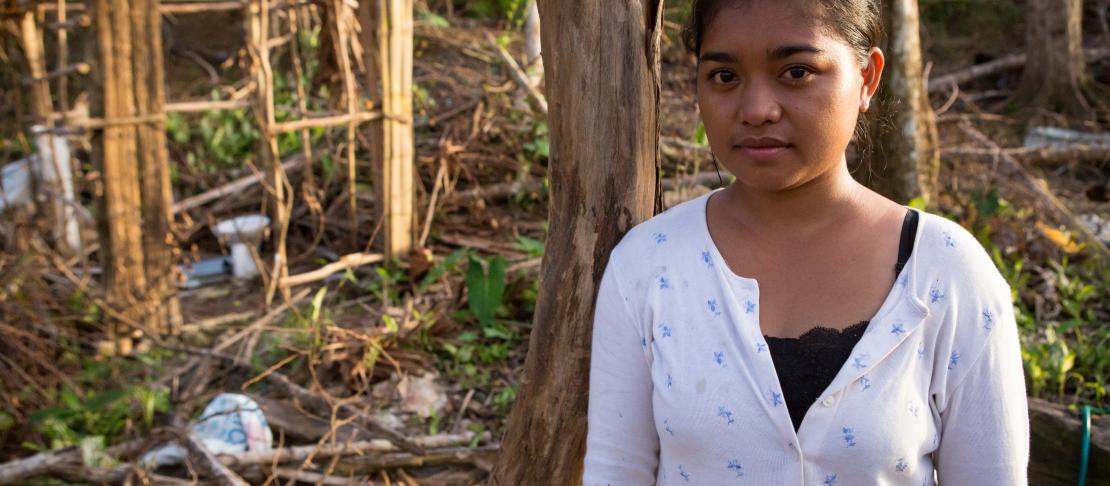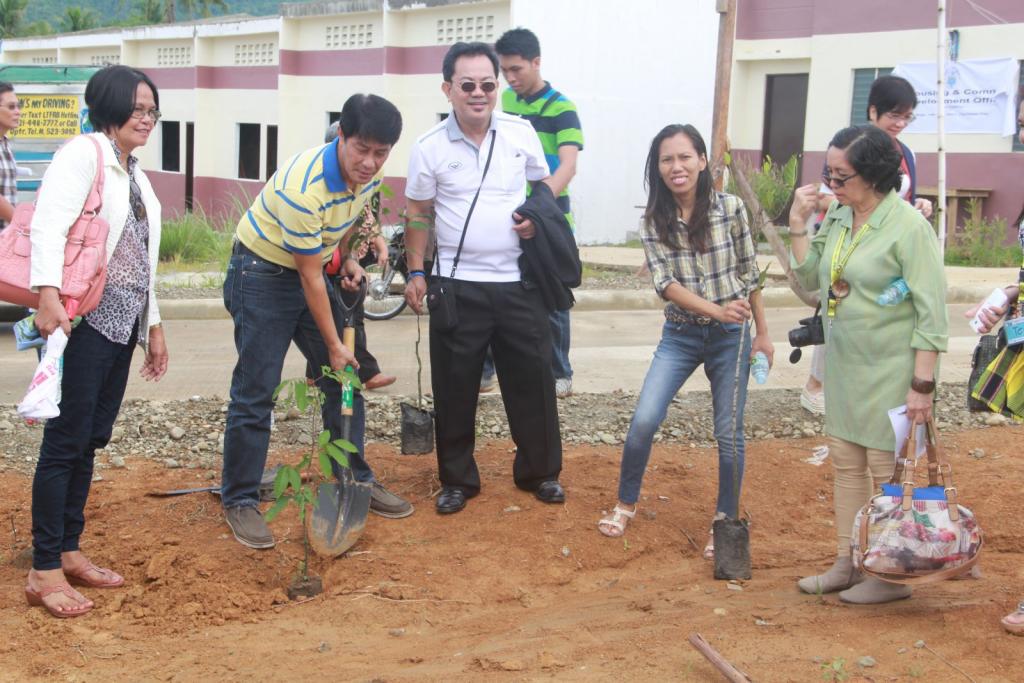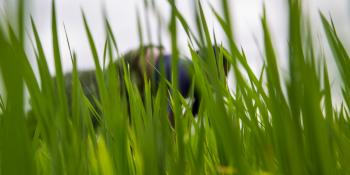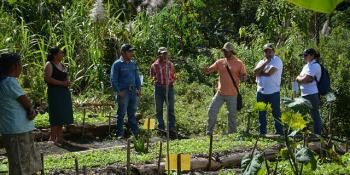After Haiyan: revitalizing agriculture in the Philippines

After Super Typhoon Haiyan in devastated Eastern Visayas in central Philippines, the agriculture sector is now looking towards long-term rehabilitation and recovery.
More than 6,000 deaths were recorded after Super Typhoon Haiyan struck central Philippines in November 2013. The Philippine government estimated the damages to be over USD 12 billion.
Aiming to ‘Build Back Better’, as the Reconstruction Assistance on Yolanda document states, government agencies in the area are taking actions and initiatives that would not only restore agriculture in the province to the state it was before the typhoon or even better but also help the people become more resilient in the future.
Ms Bernardita Valenzuela, information officer of Tacloban City, the largest city in Eastern Visayas and one area hard hit by Haiyan, puts it aptly: “It is not enough to survive. We have to continue surviving.”
Assessing the impacts of climate change
Coastal flood or storm surges of about five meters high caused much of the damages in Tacloban during Haiyan. Climate change is expected to cause sea level rise, which would intensify future storm surges.
In response, the CGIAR Research Program on Climate Change, Agriculture and Food Security Southeast Asia (CCAFS SEA) and the Oscar M. Lopez Center for Climate Change Adaptation and Disaster Risk Management Foundation, Inc. (OML Center) are implementing a project that aims to assess the vulnerability of agricultural lands in Leyte province to storm surges.
Led by the OML Center, the project ‘Assessing the Impacts of Sea Level Rise on Food Security: Lessons from Super Typhoon Haiyan’ will use Light Detection and Ranging (LiDAR) to produce flood, community, hazard and vulnerability maps, and to develop storm surge and flood models for the province. LiDAR is a remote sensing technology which produces up-to-date and high resolution elevation data sets.
The maps and models produced will increase awareness and capacity of farmers and local government units in planning adaptation strategies for climate risks, especially in the agricultural sector. In addition, the project would contribute to the improvement of disaster risk reduction and management action plans for the LGUs concerned.
Learning more about climate change
Aside from learning about the more technical side of climate change in Tacloban, there are also efforts to reach the local media, and through them, the more general public.
Seventy-five participants representing print, radio and television outlets, government agencies and the sponsoring organizations attended a media workshop themed 'Climate Change: Do You Get It Now?' last 26-29 August 2015 in Tacloban City. It is the second instalment for the series organized by the Philippine Agricultural Journalists (PAJ), Metro Pacific Investments Corporation (MPIC), Smart Communications, Philex Mining Corporation and the Philippine Department of Agriculture (DA).
Further support for the workshop comes from CCAFS SEA, International Rice Research Institute (IRRI), World Agroforestry Centre (ICRAF), Philippine Federation of Rural Broadcasters (PFRB), Philippine Science Journalists (PsiJourn) and the Philippine Network of Environmental Journalists, Inc. (PNEJ). The workshop is an outcome of the media workshop earlier conducted by CCAFS SEA to journalists across the country. Now, a series of media workshops are being extended to provincial media practitioners, with funding from private entities and government agencies.
Media workshop participants and organizers plant tree seedlings as a part of their field trip to a housing settlement for the Haiyan survivors. Communities are now realizing the importance of planting trees in adapting to climate change. Photo: Amy Cruz (CCAFS SEA & ICRAF)
Improving agriculture at the roots
In the workshop, Dr Leonarda Londina, Research Division Chief of the DA-Eastern Visayas Region, presented their various activities to improve farmers’ resilience to climate change. They are promoting the use of climate change-ready rice varieties. Farmers are also looking into diversified farming and planting crops that are tolerant to climate change such as adlai, a highly nutritious staple crop particularly in the highlands, and soybean.
The DA is also teaching farmers how to implement adjusted planting calendars; practice synchronous planting, ratooning and relay or intercropping; and integrate livestock and crops in their farming systems. Nine agrometeorological stations were established in strategic areas of the Eastern Visayas region. These automatically log the weather conditions of the areas and would help in disaster risk reduction planning and management.
On the other hand, Mr. Joel Pilapil of the Philippine Coconut Agency (PCA) in Eastern Visayas discussed in the workshop how their agency is helping coconut farmers to restore the 33 million coconut trees affected by the typhoon. PCA works with farmers to properly dispose and optimally utilize the coconut timber from felled trees, plant new trees to replace the damaged ones and fertilize the partially damaged trees to promote their quick recovery.
They are also promoting the intercropping of coconuts with legumes such as mungbean and peanut, corn, vegetables, root crops and bananas, for household consumption and additional sources of income.
All these projects and activities show that a better informed public and the government lead to better adaptation to climate change in the present and in the future. Dr Eliseo Ponce, DA consultant, stressed that, “The government must lead in crafting of solutions [for climate change], however they cannot take good leadership if the public is uninformed.” Everyone is hoping that Tacloban and Leyte will soon be able to recover and build back better.
Media coverage of climate-related issues:
Read more:
Sharing climate change science with Philippine provincial media
CCAFS-SEA kicks off first media workshop on how to report about climate change with impact
Amy Cruz is the junior communications specialist for the World Agroforestry Centre Philippines. She is also a communication consultant with the CCAFS SEA program.




